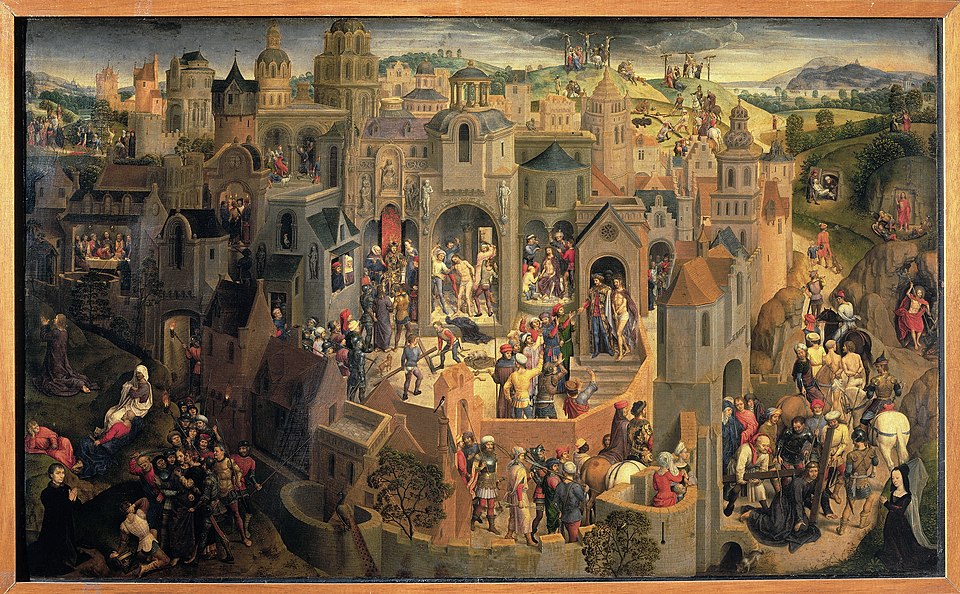
Christianity is a religion centered on the notion of gift. It is no accident that Christmas, linked with what Christians consider the ultimate gift - the birth of Jesus, is a festival of gift-giving. All sorts of historical and cultural traditions have accumulated around this festival, for good and ill, but one, it seems to me, has become especially problematic: the myth of Santa Claus. The form of giving we associate with Santa Claus is the very opposite of what counts, in the Christian tradition, as a good gift. Here’s how.
In the English-speaking world, Santa Claus (originally St Nicholas) is the man in the red coat and white beard to whom children address their requests for presents. For many, he becomes a bit like God, and as such, shapes their image of God as normally absent, occasionally useful, and generally benign. But if Santa is the distributor of gifts at Christmas, two things mark his giving: first, he gives according to merit; second, his giving is one-way and one-off, creating no relationship of trust, love, or obligation.
The famous Santa song is better known in North America than in the UK, but it has lasted long in the popular imagination. It has also shaped our ideas of gift-giving. Santa, you will recall, has a list of who’s been ‘naughty or nice’, and is using that list to direct his gifts. He is all-seeing and all-knowing (‘he sees you when you’re sleeping; he knows when you’re awake’), so his merit-judgments are unfailingly correct: he ‘knows if you’ve been bad or good’ – so ‘be good for goodness sake’! Santa’s gifts, in other words, are merited and conditioned. At one level, this is an adult ploy to get children to behave at Christmas. But at another, it reflects a remorselessly moralizing society, quick to judge who is deserving of praise or blame.
As Harvard philosopher Michael Sandel has argued in The Tyranny of Merit, we have allowed the notion of ‘merit’ to govern so many aspects of our society that those who miss out on social and economic success are led to believe that it is really their fault. Santa is the projection of our sense that nothing good comes our way unless we somehow deserve it.
The other feature of Santa’s giving is that it is all over in a trice: it creates no relationship and establishes no long-term connection. The children who write letters asking for presents are not encouraged to enquire after Santa’s wellbeing during the rest of the year. There is no friendship, no commitment, just one-way gifts that arrive without reciprocity or interpersonal depth. That fits Western individualism, where we dislike the constraints created by long-term relationships. We will take a gift ‘with no strings attached’ because thereby we retain our autonomy, our power to choose, our independence.
This was a gift ‘with strings attached’ – not unwelcome new obligations that forced them to do what they hated, but strings of love that enabled them to be better and fuller versions of themselves.
he Christmas event was originally understood as a gift of a very different kind – in fact the inverse of the Santa-gift. What the early Christians celebrated about the gift of Jesus was that it was completely unconditioned: it was given without regard to merit or desert. Even in ancient times that was an unusual, even a bizarre, form of gift: surely it would make better sense to give to those who were worthy of the gift? But what the Gospel writers and St Paul celebrated was that the gift took effect in unexpected, undeserving places – with uneducated fishermen, with women as much as men, with non-Jews as well as Jews, with the social underdogs and the morally dubious.
This was a gift that had nothing to do with merit: it was given irrespective of worth and in the absence of worth. Paul the persecutor received this gift; so did Mary, a village teenager; so did Peter, who let Jesus down time after time; so did idolatrous non-Jews; so did Zacchaeus (a tax-collector – about as popular as a loan shark today)). This was not because the gift was given randomly. It was a strategic policy to make the gift available to all. As an unconditioned gift, not dependent on gender, cultural background, social level, or moral achievement, the gift of the ‘good news’ belonged to no-one – and could go to everyone.
As a result, the early Christians formed new kinds of communities that crossed most social boundaries, and excluded no one on the basis that they were not good enough to join.
And was this a ‘Santa gift’ in the sense of creating no relationship, no ties, no expectations? Far from it! The gift of Christ was understood to transform those who received it, because ultimately it was the gift not of a thing but of a person. Where Santa disappears for eleven months of the year, the Christians found that Jesus stuck around, not as a threat but as a transformative presence (in the form of ‘the Spirit’), who slowly, subtly, but definitively made them different than what they were before. This was a gift ‘with strings attached’ – not unwelcome new obligations that forced them to do what they hated, but strings of love that enabled them to be better and fuller versions of themselves. The Christ-gift drew its recipients, as theologians would later say, into the life of God, which is the best imaginable place for humans to be.
So, how might you give gifts differently this Christmas? Well, you could go beyond ‘the usual suspects’ and include some you would not normally include on your giving-list; why not reach out, with some gesture of goodwill, to someone with whom you have had a difficult relationship this year? You could try to make your gifts more personal, as a token of who you are and who they are, and you could make an effort to continue the friendship beyond the ‘once a year’ gesture. And if someone gives to you and you haven’t thought to give to them - a common source of embarrassment - no problem: take it as an invitation to friendship, to which you can always respond at some other time and in some other way. There is always an opportunity for change and growth.
An unconditioned gift that changes who you are - liberating and transformative, underserved and perpetually effective. There might be reasons why we prefer the ‘no commitment’ gifts of Santa Claus, but we also know that the most meaningful gifts are personal; they create or sustain ties of friendship; even if they are things, they represent an interpersonal commitment of love. Christmas is always a mixed blessing, but it is not helped by the Santa songs (or, indeed, by some terrible lines in Christmas carols!). But at its origin it carries the tune of a different kind of gift, which takes no account of desert but changes its recipients in ways they can never forget.






